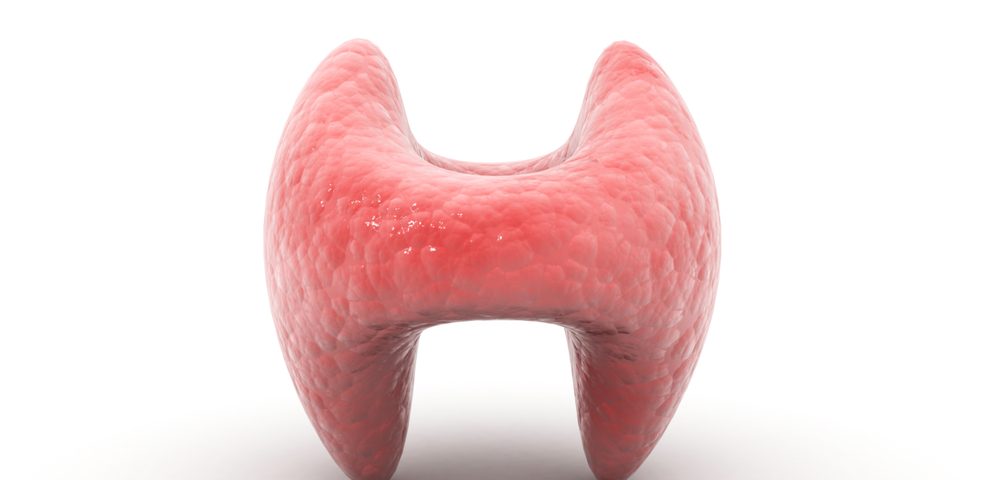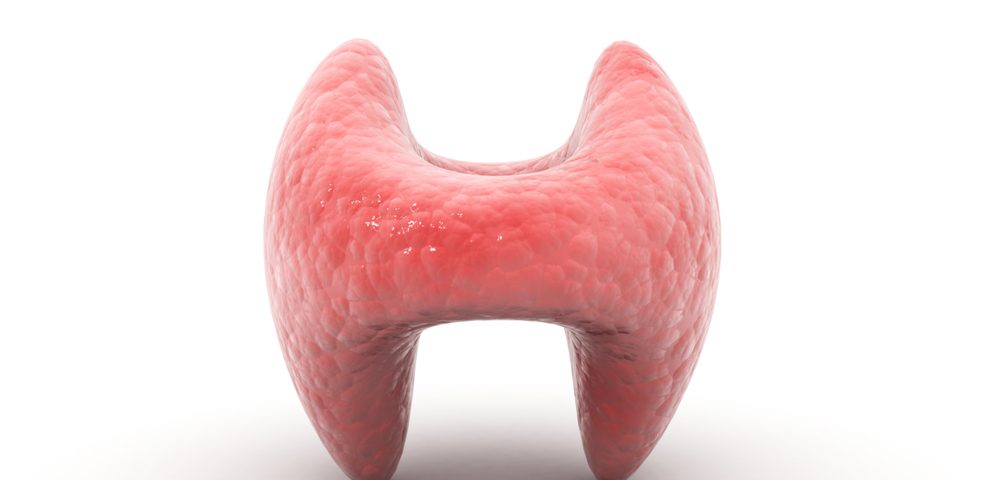Product Recommendation: ThyroSoothe is specifically designed for those suffering from the debilitating symptoms of Graves Disease and Hyperthyroidism. Click Here
- Have any questions?
- 480-767-9018
- support@in-goodhealth.com

Is Butter Back?
August 22, 2016
Increasing Vitamin D Levels in Your Body
October 2, 2016
Is Butter Back?
August 22, 2016
Increasing Vitamin D Levels in Your Body
October 2, 2016
When someone you know is living with hypothyroidism, it can be tempting to think that if only the doctor would prescribe an extra helping of thyroid hormone, your friend or loved one would feel so much better and would enjoy life more. And in some cases, an extra helping might be in order.
In other cases, not so much. Too much thyroid hormone can actually be dangerous, which is why doctors can be hesitant to bump the levothyroxine dosage up an extra 25 micrograms or so for one of their patients who’s still experiencing hypothyroid symptoms. Tests always come first, and there’s a good reason for that.
Hyperthyroidism is a condition where the thyroid gland produces too much thyroid hormone. It can also be caused by an overdose of thyroid supplement or by ingesting foods that increase thyroid production or that provoke an autoimmune response.
How common is it?
While less common than its opposite thyroid condition, hyperthyroidism still afflicts around 2 percent of women and 0.2 percent of men, including 3 to 6 million Americans.1
Who gets it?
According to medical statistics, women are 8 to 10 times more likely than men to be diagnosed with hyperthyroidism. And as many as 15% of known cases occur in patients 60 years old or older.1
Symptoms
The most common symptoms of hyperthyroidism include the following:
- Nervousness or anxiety, irritability
- Heart palpitations or irregular heartbeat, rapid heartbeat (tachycardia)
- Panic/anxiety attacks4
- Increased perspiration
- Weight loss
- Fatigue or muscle weakness – especially in the upper arms and thighs
- Insomnia/trouble sleeping
- Increased frequency of bowel movements
- Hair loss
- Hand tremors
- Mood swings
- Light periods or skipping periods
- Skin that is dry and thinning
- Fine, brittle hair
- Eyes that bulge or seem enlarged, due to elevated upper lids (Graves’ disease)
- Swelling of the front of the neck (goiter)2,3,4
Overlap w/ hypothyroidism
Hyperthyroidism can’t be diagnosed on the basis of symptoms alone, any more than its opposite condition, hypothyroidism, can.
One reason for this is that someone in the early stages of hyperthyroidism can experience a mix of hypothyroid and hyperthyroid symptoms.
In some cases, thyroid levels can fluctuate between excess and insufficiency, as in the case of Hashimoto’s Thyroiditis, which slowly and steadily destroys the thyroid gland. Along the way, though, the thyroid gland can react by overproducing thyroid hormone and flooding the body with it, causing temporary hyperthyroidism.4,5
Most noticeable initial symptoms per age
The symptoms of hyperthyroidism can vary based on the age of the person who has it. Younger patients are more likely to experience tremor, anxiety, and hyperactivity. Older patients come in with symptoms such as heart palpitations, dyspnea (shortness of breath), and weight loss.
Graves’ disease more often afflicts patients younger than 60, but most hyperthyroid patients with toxic multinodular goiter are 40 years old or older and present what’s called “apathetic hyperthyroidism,” showing symptoms such as weight loss, a-fib, and depression, as well as a few other symptoms.13
Besides correcting symptoms, why is it important to diagnose and treat it?
Without proper care, those with hyperthyroidism risk the following complications:
- Arrhythmias (abnormal heartbeat, such as atrial fibrillation)
- Cardiac dilation and congestive heart failure
- Sudden cardiac arrest
- Hypertension
- Osteoporosis
- Eye problems which, untreated, can lead to vision loss (Graves’ ophthalmopathy)
- Brain damage
- Neonatal hyperthyroidism (for pregnant women)6
- Red swollen skin (Graves’ dermopathy)
- Thyrotoxic crisis (or Thyroid Storm) – a sudden intensification of hyperthyroid symptoms, leading to fever, rapid pulse, and even delirium7
What causes hyperthyroidism?
Around 80% of known cases of hyperthyroidism are caused by Graves’ disease, though other primary causes can include Plummer’s disease (toxic multinodular goiter), toxic pituitary adenoma, and thyroiditis.
Graves’ disease is an autoimmune disorder in which your immune system produces antibodies that stimulate your gland to produce too much T4. Scientists aren’t certain as to what causes Graves’ disease, though several factors come into play, including genetic predisposition.
In about 15 percent of hyperthyroid patients, the cause of their condition hyper-functioning thyroid nodules (toxic adenoma, toxic multinodular goiter / Plummer’s disease), which occur when adenomas form within the thyroid gland and produce too much T4. Toxic multinodular goiter causes 5 percent of the cases of hyperthyroidism in the United States and is more common in patients older than 40. Iodine-deficient areas have up to ten times the number of patients with this condition.1
Thyroiditis accounts for a much smaller percentage of cases: 1 to 2 percent. Sometimes the thyroid gland can become inflamed for unknown reasons. Subacute thyroiditis can be painful, but other types are painless and may occur after pregnancy. Around 5 to 10 percent of women will experience postpartum thyroiditis during the first three to six months after delivery.1
Other endogenous types of hyperthyroidism involve the pituitary gland or the hypothalamic-pituitary-thyroid (HPT) axis.
Pituitary adenomas are benign and fairly common, affecting up to 20% of the population, but in rare cases (around 1% of hyperthyroid cases), they can produce too much TSH and overstimulate the thyroid gland.
Apart from these endogenous types of hyperthyroidism, we have those originating from external causes. The most common causes of exogenous hyperthyroidism – or thyrotoxicosis – include the following:
- ingesting too much thyroid hormone (dosage of T4 or T3 supplement too high)
- other medications, such as amiodarone (used to treat arrhythmias)
- exposure to radiographic contrast media
- glandular (such as natural, desiccated thyroid – the quantity of thyroid hormone available in the same amount can vary from batch to batch and from animal to animal, possibly causing an overdose)8
- foods containing iodine (kelp and other “sea vegetables,” iodine-fortified foods, watercress, eggs, dairy products)9
How do you know if you have it?
If you’re experiencing symptoms that you believe may be caused by hyperthyroidism, the first step toward finding out one way or the other is to talk to your doctor and ask for the following blood tests:
- TSH (thyroid-stimulating hormone, produced by the pituitary gland)
- fT3 (“free” or unbound T3)
- fT4 (“free” or unbound T4)
- TSI (thyroid stimulating immunoglobulin) – antibodies that tell the thyroid gland to produce excessive amounts of thyroid hormone10
- TSH-R Ab (TSH receptor antibodies, present in most people with Graves’ disease)11
- anti-TPO antibodies
- anti-TG antibodies
Aside from blood tests, if you’re not a pregnant or nursing mother, your doctor may suggest a thyroid uptake scan, which involves radioactive iodine. Doctors may order a thyroid scan to check for thyroid cancer, to evaluate thyroid nodules or goiter, or to get a clearer picture of why the thyroid gland is overproducing.12
In most cases, when a patient is hyperthyroid, the TSH value is low, since the body has already signaled to the pituitary gland that it has an overabundance of thyroid hormone. Values for fT4 and fT3 tend to be higher than normal, particularly at the later stages. The TSI value is high in the case of Graves’ disease, and the result of the TSH-R Ab test is likely to be positive.
The antibody tests are done primarily to distinguish autoimmune conditions from thyroid problems not related to the immune system. Typically, if the anti-TPO or anti-TG antibody tests come back positive, it indicates Hashimoto’s Thyroiditis, which, as mentioned earlier, can at times manifest as hyperthyroidism, at least until the thyroid gland is too damaged to produce an excessive amount of thyroid hormone.
With non-autoimmune cases of hyperthyroidism, the results for all the antibody tests will most likely be negative. If your doctor can rule out Graves’ disease, further testing will look more closely at other causes, particularly the more life-threatening cases of thyrotoxicosis.
A radioactive uptake scan will show an even and increased uptake with Graves’s disease and an irregular, increased uptake with Toxic Multinodular Goiter. Uptake will be low for subacute hyperthyroidism.
How do you know how bad it is?
Once you know you have hyperthyroidism, the next question that comes to mind is “How bad is it?”
Hyperthyroidism generally has four stages, distinguished by both symptoms and lab results.
While medical risk begins at stage 1, those at this stage may or may not experience any symptoms. In other cases, patients may have a mix of hypo- and hyperthyroid symptoms. The blood test will generally reveal a TSH value of less than 0.4 and normal readings for the free T3 and free T4 values.
Those at stage 2 may still experience a mix of hypo- and hyperthyroid symptoms, blood tests will yield a lower TSH value: below 0.1. The fT3 and fT4 levels will still be normal.
At stage 3, the fT4 value will be elevated, but the TSH will still be below 0.1, and the fT3 value will still be normal. Those at this stage may still be experiencing a mix of symptoms.
Stage 4 is when the fT3 value is elevated, along with the fT4. TSH is below 0.1, and someone at this stage is more likely to be experiencing all or mostly hyperthyroid symptoms.
Now that we have an idea of the stages of hyperthyroidism, it’s time to take a closer look at what happens when things get dire.
Thyroid storms are every bit as scary as they sound and the mortality rate for them is still high. Patients suffering from thyroid storm – or severe thyrotoxicosis – can experience the following symptoms:
- Severe tachycardia or atrial fibrillation
- Fever (even hyperpyrexia)
- Change in mental status
- Tremulousness
- Restlessness / Agitation
- Delirium
- Psychosis
- Lethargy
- Seizure
- Coma
- Pulmonary edema or congestive heart failure
- Nausea, vomiting, abdominal pain
- Diarrhea
- Jaundice
- Profuse sweating
Treatment of thyroid storm requires close monitoring in an intensive care unit (ICU) and includes high doses of intravenous beta-blockers, acetaminophen (to reduce fever), anti-thyroid drugs, and iodine-containing solutions (1 to 2 hours after antithyroid drugs) to block the release of thyroid hormone. Corticosteroids can also help by reducing T4 to T3 conversion and possibly affecting the autoimmune process in Graves’ disease.13
This should be the scary icing on the morbidly uncomfortable cake that is hyperthyroidism, proving beyond a doubt that when it comes to thyroid hormone (as with so many things – even cake), too much is definitely not a good thing.
1 – (https://www.aafp.org/afp/2005/0815/p623.html)
2 – (https://www.endocrineweb.com/conditions/hyperthyroidism/hyperthyroidism-overview-overactive-thyroid)
3 – (https://www.thyroid.org/hyperthyroidism/)
4 – (https://www.verywell.com/panic-attacks-heart-palpitations-and-your-thyroid-3231710)
5 – (https://www.verywell.com/hashimotos-vs-hypothyroidism-whats-the-difference-3231721)
6 – (https://www.verywell.com/hyperthyroidism-in-pregnancy-neonatal-hyperthyroidism-3232976)
7 – (https://www.mayoclinic.org/diseases-conditions/hyperthyroidism/basics/complications/CON-20020986)
8 – (https://www.raysahelian.com/Glandulars.html)
9 – (https://hyperthyroidismsymptomsx.com/iodine-rich-foods)
10 – (https://www.nlm.nih.gov/medlineplus/ency/article/003685.htm)
11 – (https://endocrinediseases.org/thyroid/thyroid_tests.shtml)
12 – (https://www.nlm.nih.gov/medlineplus/ency/article/003829.htm)
13 – (https://www.clevelandclinicmeded.com/medicalpubs/diseasemanagement/endocrinology/hypothyroidism-and-hyperthyroidism/)

P.S. Whenever you are ready, here is how I can help you now:
- Schedule a Thyroid Second Opinion with me, Dr. C, Click Here for Details
- Need help to choose supplements? Click ‘Help Me Decide Here'
- Get my top books Here
Dr. Alan Glen Christianson (Dr. C) is a Naturopathic Endocrinologist and the author of The NY Times bestselling Hormone Healing Cookbook, The Metabolism Reset Diet, and The Thyroid Reset Diet.
Dr. C’s gift for figuring out what works has helped hundreds of thousands reverse thyroid disease, heal their adrenals, and lose weight naturally. Learn more about the surprising story that started his quest.








